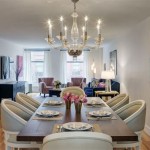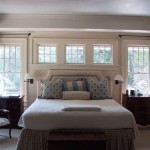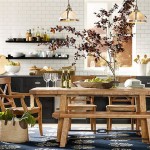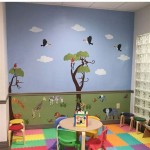Waiting Room Decor: Creating a Comfortable and Inviting Space
Waiting rooms serve as the first impression for many businesses, healthcare facilities, and other public spaces. The decor of these spaces plays a significant role in shaping the visitor's experience and can impact their overall perception of the organization. Here are some essential elements to consider when designing a welcoming and comfortable waiting room.
Furniture and Seating Arrangements
The choice of furniture should prioritize comfort and functionality. Opt for comfortable chairs or sofas with ample seating space. Arrange them in a way that encourages conversation and fosters a sense of community, while maintaining a sense of personal space. Consider adding tables or side tables for convenience.
Lighting
Proper lighting is crucial for creating a warm and inviting atmosphere. Avoid harsh overhead lighting that can be glaring. Instead, opt for diffused or natural lighting. Choose lamps with soft, warm light bulbs to create a relaxing environment. Dimmers allow for flexibility in adjusting the lighting levels to suit different times of day and activities.
Colors and Patterns
Color scheme and patterns can significantly influence the mood of the waiting room. Neutral colors like beige, gray, or light blue typically evoke a sense of serenity and calm. Bold colors or striking patterns can be used sparingly to add visual interest, but avoid overwhelming the space.
Artwork and Decor
Artworks and decorative elements can transform a waiting room into a visually appealing space. Select artwork that complements the overall decor and creates a calming or uplifting atmosphere. Avoid clutter and opt for pieces that are aesthetically pleasing and not distracting.
Electronics and Amenities
Technology can enhance the waiting room experience. Consider providing free Wi-Fi, charging stations, or entertainment options such as televisions or music. However, ensure that the volume is kept at a reasonable level to avoid creating noise pollution.
Plants and Greenery
Plants and greenery bring a touch of nature indoors, creating a more pleasant and relaxing environment. Choose low-maintenance plants that can thrive in the lighting conditions of the waiting room. Avoid placing plants too close to seating areas, as they may become obstacles or allergens.
Comfortable Temperature and Air Quality
Maintaining a comfortable temperature and good air quality is essential for the well-being of visitors. Ensure that the heating and cooling systems are functioning properly and that the air is fresh and odorless. Consider using air purifiers or diffusers to improve air quality and create a more pleasant atmosphere.
Signage and Wayfinding
Clear and concise signage is crucial for navigating the waiting room. Direct visitors to different areas, such as reception, restrooms, or specific seating areas. Use consistent fonts and colors to ensure legibility and avoid confusion.
Adaptability and Flexibility
Waiting room decor should be adaptable to accommodate different needs and activities. Consider providing a variety of seating options, including high-back chairs for privacy or low chairs for group discussions. Flexible furniture can be reconfigured to suit different seating arrangements or special events.

80 Office Waiting Rooms Design Ideas Room

Ideas For Small Waiting Room Decor Office Chairs Chair Design

80 Office Waiting Rooms Design Ideas Room

6 Waiting Room Decor Ideas To Create A Relaxing Environment Serenity Aquarium Aviary Services

Office Waiting Room Ideas Layout Plans Décor Timeless Chesterfields Blog

4 Tips For Choosing The Best Hospital Waiting Room Furniture Direct Supply

How To Design A Waiting Room That Will Make Lasting Impression Nbf Blog

Portfolio Medical Office Decor Waiting Rooms Doctor Design

Waiting Rooms Too Can Promote Patient Health

Waiting Room In A Tire Contemporary Granny Flat Or Shed Toronto By Chic Alors Decor Design Houzz Au







